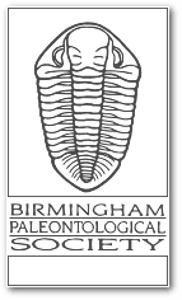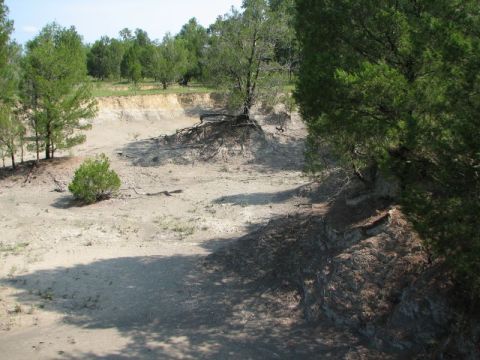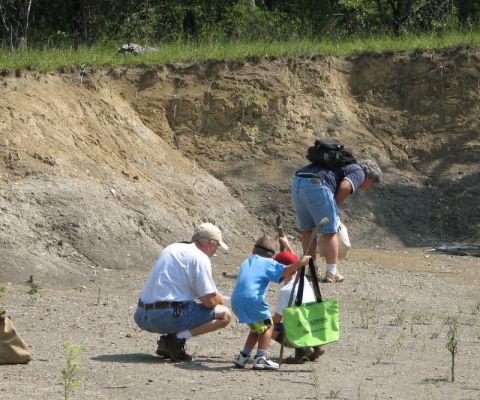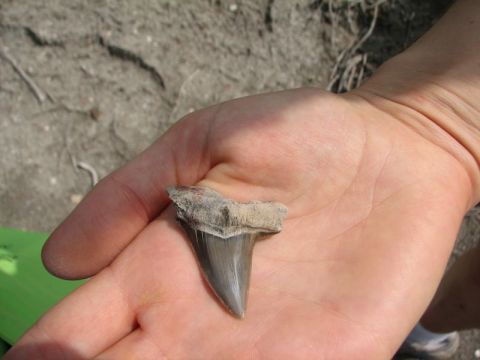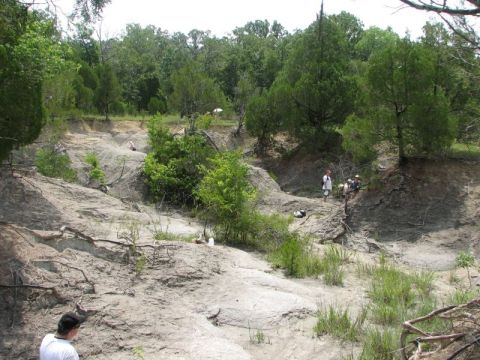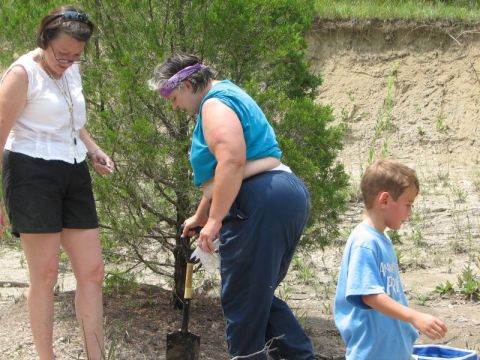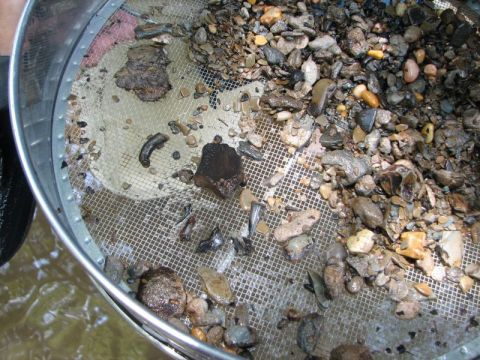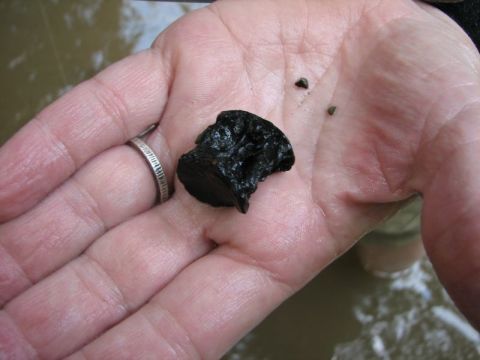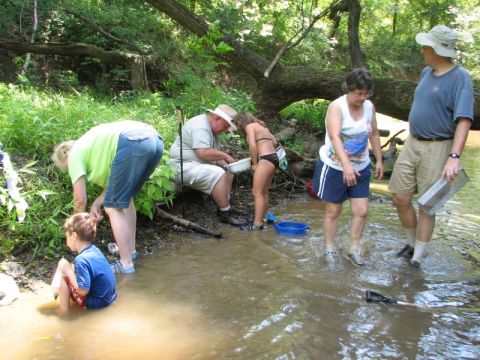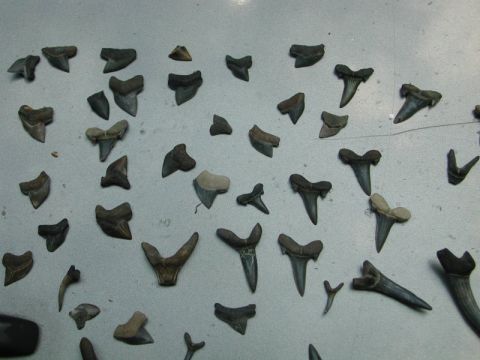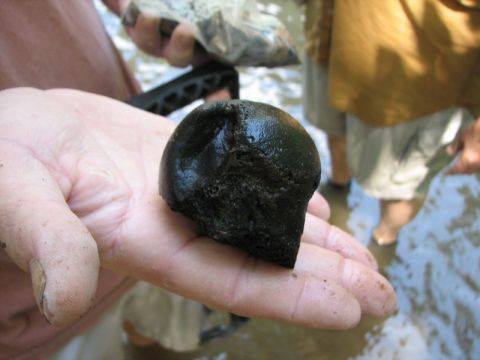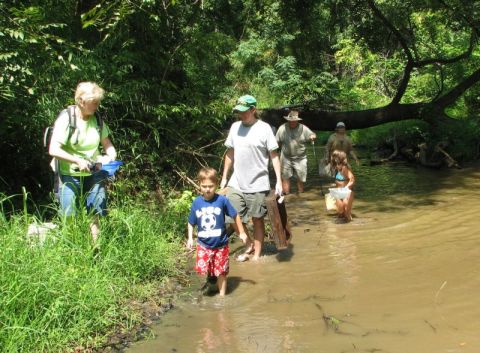After rounding up the gang (which is a minor miracle in itself!), we hiked back to our vehicles for lunches, then headed for the creek. Finally, time to get wet and cool off! Out with the sieves, from collander baskets to "real" geology sorters, to home made wood-sided screens. At least a dozen ptychodus teeth turned up - Claire may be the "winner" on these, she had found 6 at last count. Every screen we searched had several shark teeth, and other fossils were also found, including a large fish vertebra, gastropod steinkerns (internal molds), worm tubes, and one very nice arrowhead. We left relatively early (hey, some of us would have stayed til dark if we could have!), and many of us stopped by a famous BBQ joint to continue the fun and fossil discussion.
--Edited by Vicki Lais
(photos courtesy Bob Stewart, Steve Corvin and Vicki Lais)
James Lamb gives a refresher talk on rules about collecting at museum sites, BPS ethics, and landowner restrictions.
Many "pieces" are scattered throughout the gully, and according to James Lamb, they are all fossils.
Some typical fossils found in chalk gullies - one finds hundreds of worm tubes, and only a few shark teeth.
Shark teeth are "normal" to find in gullies, but Sylvie found one whose size is truly spectacular for these gullies!
Small mosasaur vertebra found by Leisa as we were leaving the gullies "Everybody just stepped right over it or passed it by without noticing".
Typical finds after washing the sand/mud from the gravel - notice the shark teeth and the piece of bone.
A laid back group, keeping cool, having fun. There were various groupings of people all along the creek - some went upstream, some went downstream. James Lamb is collecting material to be used in an upcoming exhibit at McWane Science Center.
